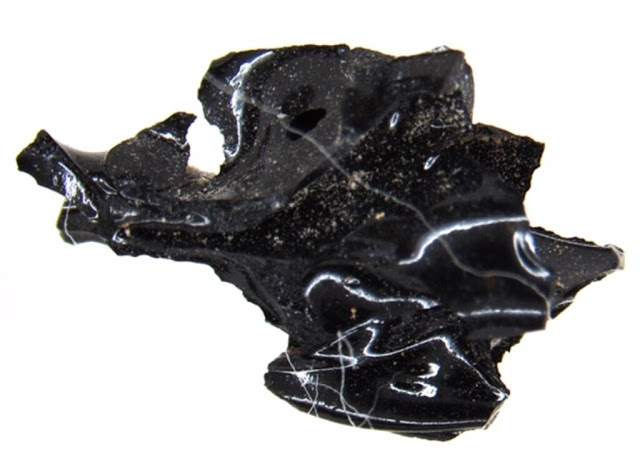The eruption of Mount Vesuvius in AD79 turned the brains of one of its victims into glass, we are told – see https://archaeologynewsnetwork.blogspot.com/2020/01/mount-vesuvius-blast… … and we are talking about blast phenomena as in a big explosion – and Vesuvius went off with a bang. Blast is an intense surge of heat – and one of the features of a nuclear explosion. Archaeologists rarely encounter brain tissue but the eruption of Vesuvius killed the inhabitants of Pompeii and Herculanium, and buried them in a thick layer of ash. The remains of a man lying on a wooden bed were discovered in Herculanium. He is believed to be the custodian of a place of worship, the Collegium Augustalium. The victim's brain was petrified – into what looks like a piece of glass …
 … it was caused by the heat of the blast according to a study, which estimates the heat reached 520 degrees celsius (920F). TGhe extreme radiant heat of the blast ignited body fat and vapourised soft tissue. A solidified spongy mass was found insde the chest cavity and is also unique and has been compared to the firebombing of Dresden and Hamburg in WWII. The flash of extreme heat was followed by a rapid drop in temperature which preserved the vitrified material (or possibly superceded the fossilisation process). The moral of the story for Electric Universe adherents is that the fossilisation process does not have to have a connection with electric discharge phenomena as quite clearly volcanic eruptions can do the same thing – and so can atmospheric explosions of meteors (by inference).
… it was caused by the heat of the blast according to a study, which estimates the heat reached 520 degrees celsius (920F). TGhe extreme radiant heat of the blast ignited body fat and vapourised soft tissue. A solidified spongy mass was found insde the chest cavity and is also unique and has been compared to the firebombing of Dresden and Hamburg in WWII. The flash of extreme heat was followed by a rapid drop in temperature which preserved the vitrified material (or possibly superceded the fossilisation process). The moral of the story for Electric Universe adherents is that the fossilisation process does not have to have a connection with electric discharge phenomena as quite clearly volcanic eruptions can do the same thing – and so can atmospheric explosions of meteors (by inference).
